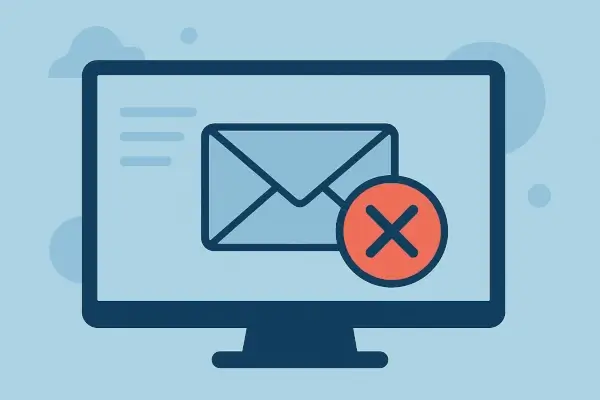
An email blacklist is a database that lists IP addresses or domains suspected of sending spam or malicious emails. Mail servers use these lists to decide whether to deliver or reject incoming messages. Understanding how blacklists work is essential for keeping your messages deliverable and your domain reputation intact.
Key Takeaways
- Email blacklists are databases used by mail servers to filter spam.
- Being blacklisted can block your emails or send them to spam folders.
- Blacklists protect users but can also affect legitimate senders.
- Knowing how they work helps maintain a trusted sender reputation.
- Continuous monitoring ensures early detection and reliable delivery.
Table of Contents:
What Is an Email Blacklist?
How Does an Email Blacklist Function?
Who Maintains Email Blacklists?
What Types of Email Blacklists Exist?
How Are Blacklists Used by Email Systems?
What Is the Purpose of Email Blacklists?
Why Do Blacklists Matter for Legitimate Senders?
Conclusion
FAQ
Email Blacklist Definition
An email blacklist is a real-time database that lists IP addresses or domain names identified as potential sources of spam or malicious content. Email servers and spam filters use these lists to decide whether to deliver, block, or flag incoming messages.
In simple terms, if your email infrastructure appears on one of these lists, your messages may never reach recipients' inboxes. Blacklists are an essential part of internet hygiene, protecting users from unwanted or harmful emails while shaping sender reputation across global mail systems.
How Does an Email Blacklist Function?
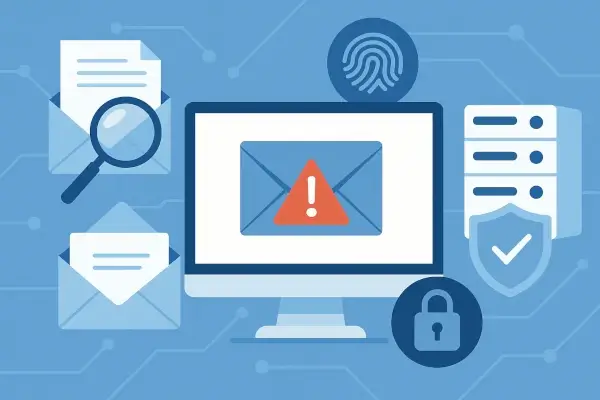
Email blacklists, also known as DNS-based blacklists (DNSBLs) or real-time blackhole lists (RBLs), operate on the Domain Name System (DNS) framework. When an email reaches a mail server, the server checks the sender's IP or domain against one or more blacklist databases. If the sender matches a listed entry, the server applies its policy, often rejecting, delaying, or marking the message as spam.
This process happens almost instantly. The decision is based on shared data from spam traps, automated crawlers, and user reports collected by blacklist operators. Because these databases are publicly queryable, any mail system worldwide can reference them without direct integration or authentication. This makes blacklists one of the most efficient filters in the email ecosystem.
Who Maintains Email Blacklists?

Blacklists are managed by independent security organizations, internet service providers (ISPs), anti-spam communities, and private companies.
Each maintains its own criteria for identifying suspicious senders, relying on technical indicators such as message patterns, spam traps, and historical sender reputation. Some focus on high-volume spam sources, while others track compromised or misconfigured servers that unintentionally distribute unwanted mail.
Well-known operators include Spamhaus, Barracuda, and SpamCop. These entities share data with mail providers and cybersecurity systems, forming a distributed defense network that updates in real time.
Listing and delisting decisions vary between providers, but all aim to balance security with fairness toward legitimate senders.
What Types of Email Blacklists Exist?
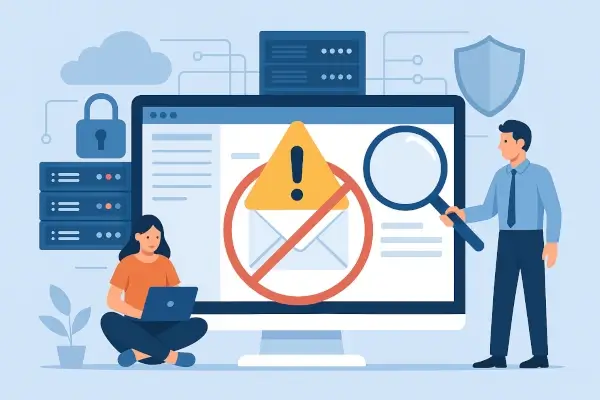
There are two core categories of email blacklists: IP-based and domain-based.
IP-Based Blacklists
These track the numerical IP addresses of mail servers that have sent large volumes of spam or triggered abnormal patterns.
When an IP is listed, all messages from that address are affected, regardless of content. IP-based blacklists are particularly common among ISPs and large mail gateways that process high message volumes.
Domain-Based Blacklists
Domain blacklists list domain names involved in unwanted or malicious activity. They are often used by security systems analyzing links, attachments, and "From" headers.
As cloud email platforms spread traffic across shared IP ranges, domain-level checks have become increasingly important for reputation management and brand protection.
Both types serve the same purpose: to protect recipients by blocking risky traffic before it reaches inboxes.
How Are Blacklists Used by Email Systems?
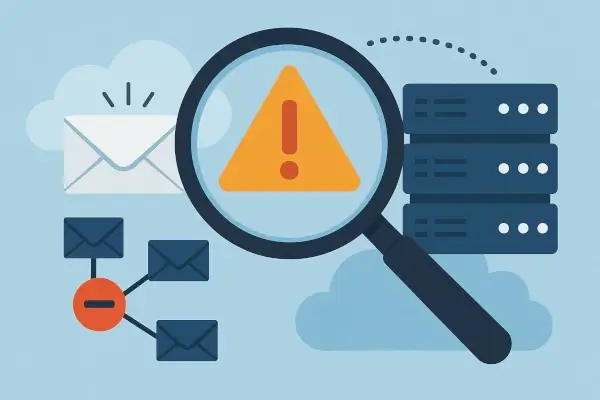
Mail servers, spam filters, and cybersecurity tools integrate blacklist lookups into their filtering process.
When an incoming message arrives, the receiving system sends a DNS query to multiple blacklist databases. Each query checks whether the sender's IP or domain appears in the list. If a match is found, the system assigns a reputation score or applies a blocking rule.
This layered filtering allows providers to reject potentially harmful emails before delivery, reducing the chance of phishing, spoofing, and spam outbreaks.
Most modern systems combine blacklist results with additional signals such as authentication records (SPF, DKIM, DMARC) and user engagement data to form a comprehensive spam-detection model.
What Is the Purpose of Email Blacklists?
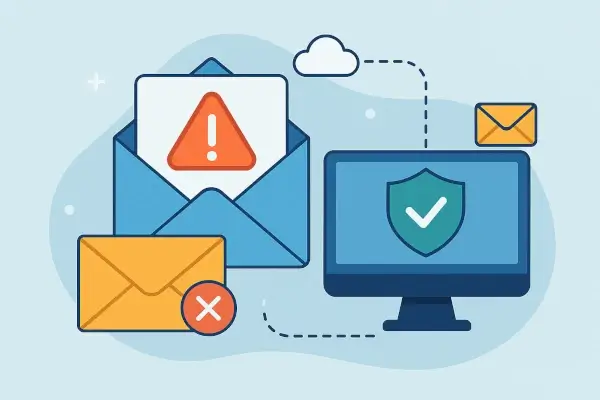
The main goal of an email blacklist is to preserve email integrity. By maintaining records of untrusted or compromised senders, blacklists allow mail providers to protect users from scams, phishing, and malware. They also encourage responsible email behavior by rewarding senders who maintain clean mailing practices and penalizing those who don't.
For the broader ecosystem, blacklists provide a decentralized quality-control mechanism. Instead of relying on a single authority, they enable many organizations to contribute data to a collective filtering process. This open structure is why blacklists remain one of the oldest and most reliable components of email security infrastructure.
Why Do Blacklists Matter for Legitimate Senders?
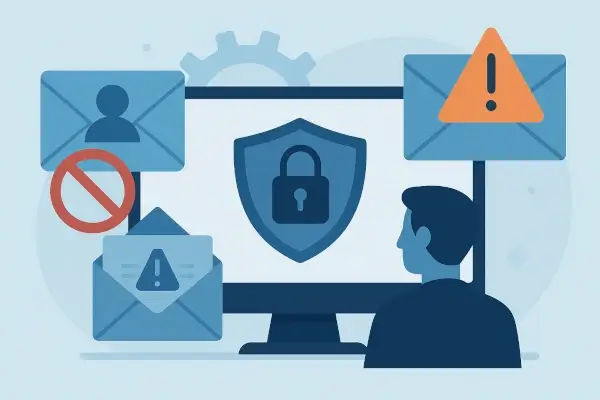
Even though blacklists were created to stop spam, they influence the reputation of all senders.
If a business's mail server or domain ends up listed due to technical errors, shared IP issues, or false positives, its messages may never reach customers. This can affect sales notifications, password resets, and other critical communications.
Understanding what an email blacklist is and how it functions helps legitimate senders recognize the need for proactive monitoring. A trusted email blacklist monitoring service can alert you immediately if your domain or IP is listed, allowing fast action before reputation or revenue is affected.
Start Blacklist Monitoring Your Emails Now!
Conclusion
Email blacklists are a critical defense layer in global email security. They protect users from spam but can also block legitimate senders. Knowing what they are and how they function helps businesses maintain trustworthy communication and avoid delivery issues.
Related Guides
Explore other helpful resources in our Email Blacklist Monitoring series:
- What Is Email Blacklist Monitoring? — Learn how automated monitoring detects blacklisting issues early.
- Why Email Servers Get Blacklisted? — Learn the main causes behind blacklisting, from poor mailing practices to security flaws.
- Why Email Blacklist Monitoring Matters - Explore the business impact of blacklisting and why proactive monitoring protects your reputation.
- How Email Blacklist Monitoring Works - See how automated detection systems identify listings and alert administrators.
FAQ: Email Blacklists
It blocks or flags emails from IPs or domains identified as spam sources to protect recipients. They are maintained by security organizations, ISPs, and anti-spam communities.. When listed, your emails may be rejected or sent to spam folders instead of the inbox. Yes. Some track IP addresses, others list domains associated with spam activity. Yes, often due to technical issues or shared server IPs with poor reputations.What does an email blacklist do?
Who manages email blacklists?
How does a blacklist affect email delivery?
Are there different types of blacklists?
Can a legitimate sender be blacklisted?


 Copyright 2000-2025, WebSitePulse. All rights reserved.
Copyright 2000-2025, WebSitePulse. All rights reserved.